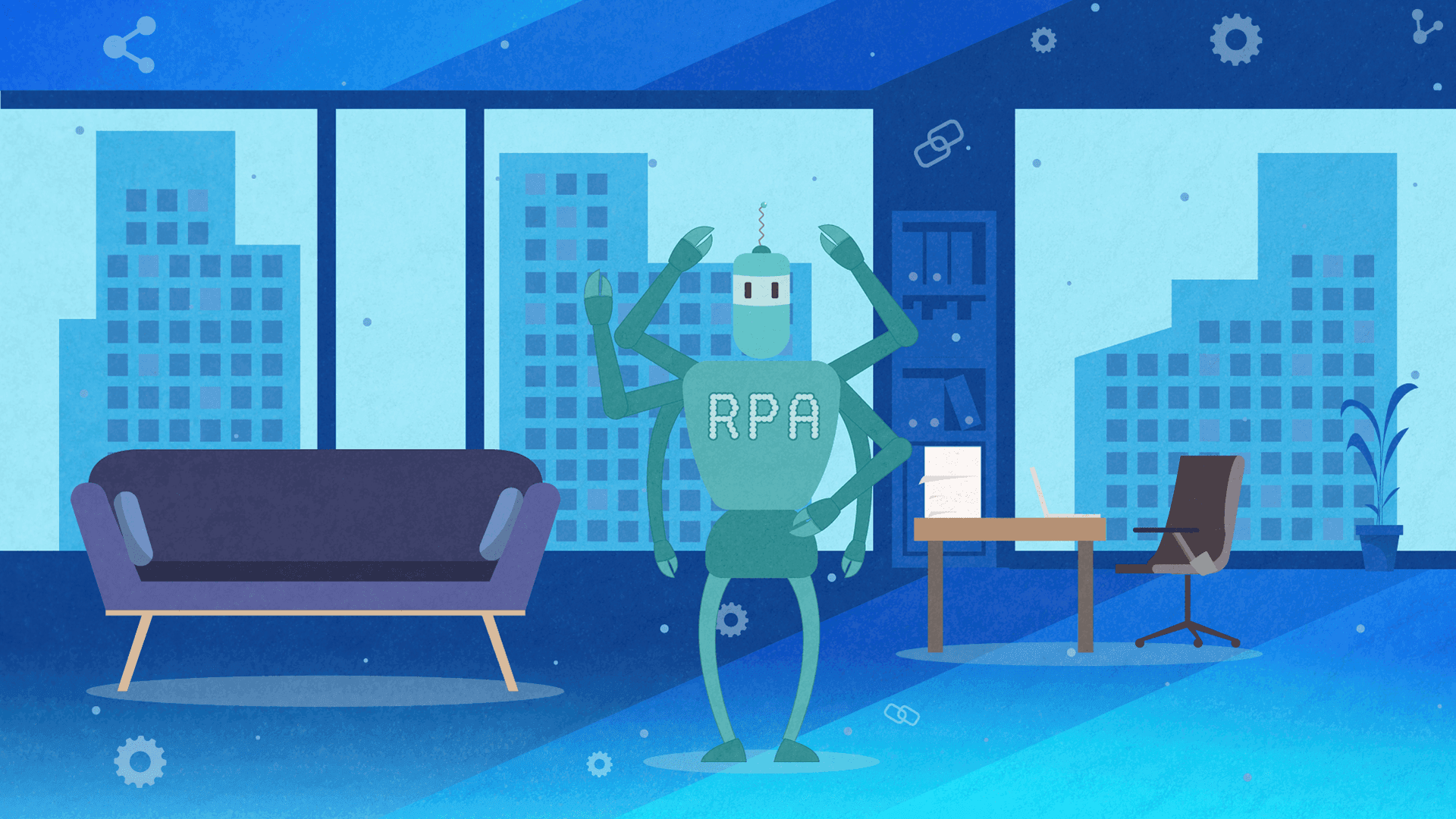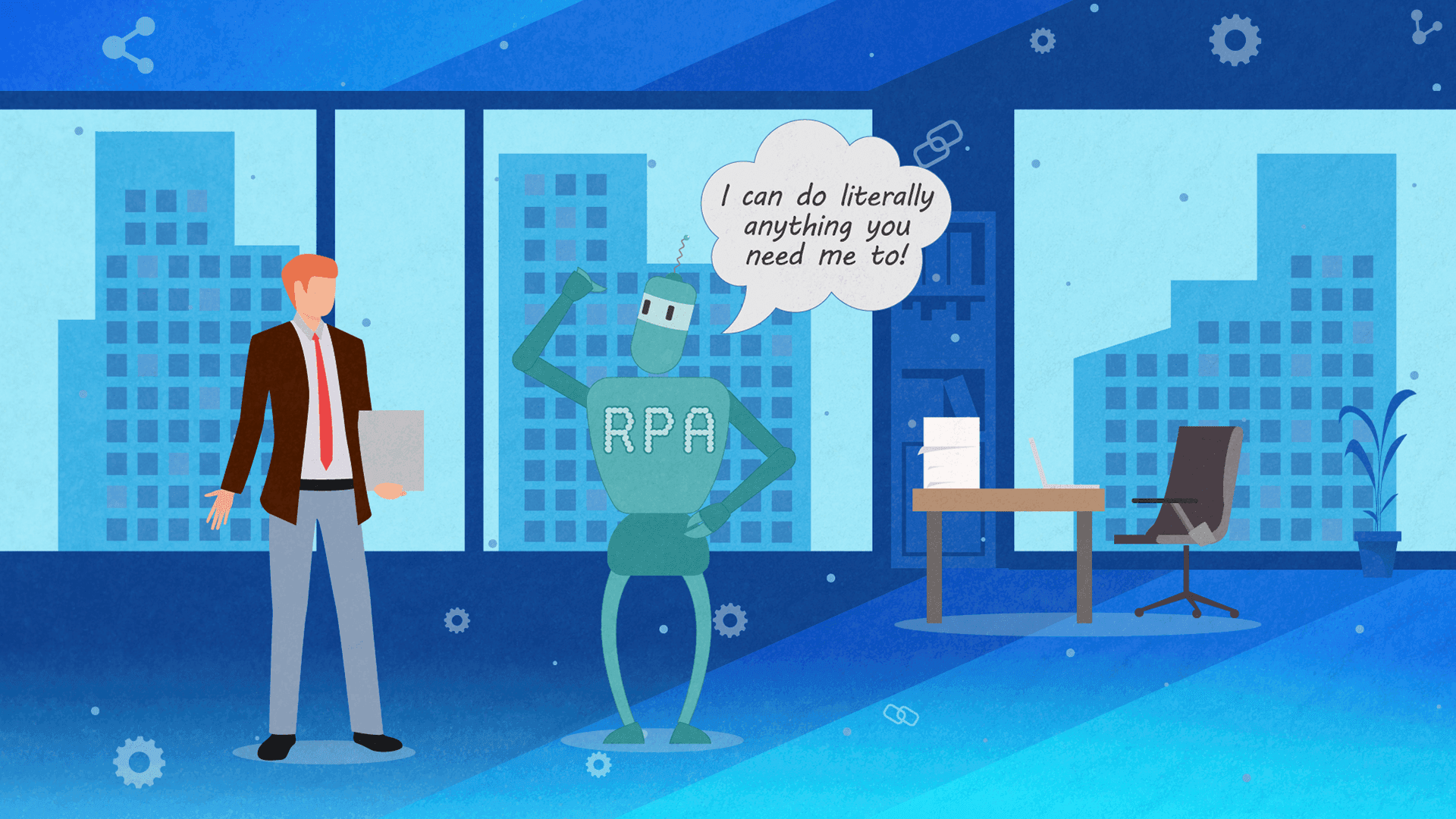What is RPA and Why You Should Care About It?

According to the latest study conducted by AI Multiple, RPA has experienced significant growth in popularity and adoption over the last 12 months.
The same study brought to light that over 53% of enterprises (that have participated in the survey) have started to experiment with RPA. An impressive 30% of them have seen significant productivity and compliance improvements in the last couple of quarters.
Top adopters have seen their investment in RPA payoff beyond their expectations which encouraged other businesses in their network to start playing around with this tech.
Even though there’s enough proof online that RPA has the power to help businesses perform better where it matters most, this is still a relatively new and unexplored concept.
We at Share It can tell you from experience that RPA requires proper design, planning, and governance to positively influence a business.
To check all the boxes, you need to have some skills. If you don’t have experience working with RPA, your first attempts will probably require a lot of polishing.
Because of this fact alone, we decided to make today’s blog post an introductory piece to RPA. In today’s article, we’ll explain stuff like: what is an RPA, what it does, how you can successfully leverage its power for your business, and how to determine if it’s the right solution for your problem.
Without further ado, let’s dive in:
What is RPA?

Robotic process automation or RPA is a piece of tech that enables seamless building, deploying, and managing of software robots that emulate humans actions interacting with digital systems and software.
In layman’s terms, these robots have the ability to communicate with tools and systems in the same way people do. They are able to understand what’s on a screen, complete the correct keystrokes, navigate systems, identify and extract data, and perform a wide range of defined actions.
Because of this set of abilities alone, more CIOs are turning to RPA to help them eliminate tedious tasks from their day-to-day life and free up their talent to focus on higher-value work.
The tasks that usually get automated with RPA range from something as simple as generating an automatic response to an email to deploying thousands of bots, each programmed to automate jobs in an ERP system.
All you need to do is define a set of instructions for a robot to perform and wait for it to finish (as fast as possible, without any errors).
How Does RPA Help Your Business?
Once we eliminate the obvious benefit of removing tedious tasks from your team’s plate and giving them to a bot that can execute them faster and with more precision, RPA can positively affect various departments of your business in different ways.
From customer satisfaction and employee engagement to finance and resource utilization - RPA can remove unnecessary blockers from processes that make your information flow feel clunky.
When you think about it as an investment, RPA can positively affect your business across the following points:
-
Higher efficiency and productivity - the team gets freed to focus on their areas of genius vs. being stuck updating basic information by hand. In addition to this, RPA eliminates the human error factor from the game, making it less stressful to double-check everything and fix problems that your over-exhausted team members create by looking at the same thing all day.
-
Faster information flow and delivery: Since employees are no longer tasked with inserting and crunching data by hand, the information gets faster distributed. Bots work at lightning speed around the clock to properly copy, fetch, and deliver the necessary data.
In addition to better data management, RPA helps improved the quality of data, increased scope for data collection, and makes data analysis of data easier and more precise across the board.
- Wage costs - According to Almato’s research, close to 60% of businesses have stated that they’ve saved money by rolling out RPAs.
That said, there’s a legitimate belief that more and more businesses are going to opt for things like investing in RPA and similar solutions than hiring personnel to do basic jobs.
In one of VentureBeat’s articles, various AI experts expressed concern that robots are going to take over the low-end positions from humans and that we need to learn how to adapt and work in sync, not against emerging tech.
- Less risk: RPA projects are usually low risk, meaning that they are completed quickly without disturbing existing systems. Since they eliminate the human factor from the various processes, manual errors get also cut down to size.
However, this doesn’t mean that RPA is a fail-proof solution. RPA bots are not impervious to malfunctions. They require monitoring and maintenance.
How to Determine if a Specific Process Should be Replaced with an RPA Bot?

Evaluating your internal processes and workflows that would be good candidates for RPA is a whole different topic that requires a lot of explaining. We’ll go deeper into this in one of our upcoming blog posts.
But, since we already opened Pandora’s box, here are some key factors worth singling out early (since they can help you and your team get a better handle on what RPA is and how it could be useful).
These factors will help you paint the full picture of developing and implementing RPA solutions for your non-technical colleagues across the company.
When you open up the conversation and start discussing wheater or not a process could be improved with an RPA, try to determine one thing right from the start:
- Does the process you’re currently discussing require people to do a high volume of repetitive data work?
If the answer is yes, then you can continue the conversation and discuss the actual benefit of removing this sort of activity from people’s plate and giving it to robots to execute.
In addition to this, there are a couple of other basic follow up questions that you need to ask early when determining possible RPA fits:
- Is the process rule-based? - If so, then it’s a good fit for an RPA.
- Is the process repeated at regular intervals? - If so, RPA could probably successfully “upgrade” it.
- Does the process have defined inputs and outputs? - If it doesn’t, it will be difficult for the robot to execute it.
- What’s the volume of the reparations in this process? - If this process doesn’t require frequent updates and changes, then you shouldn’t really waste your RPA investment on it.
Over to You
Thank you for taking the time to read our latest blog post. We hope it helped you understand what is RPA and how it can help your business.
Obviously, this is the first piece on this topic - we plan to go deeper into it in the upcoming weeks and explain everything you need to know regarding investing in RPA.
However, if you have questions that we haven’t answered in this post and you want to acquire more knowledge on this topic ASAP - feel free to reach out to us directly! Our team of engineers is happy to talk to you and help you create RPA-based solutions for your business!